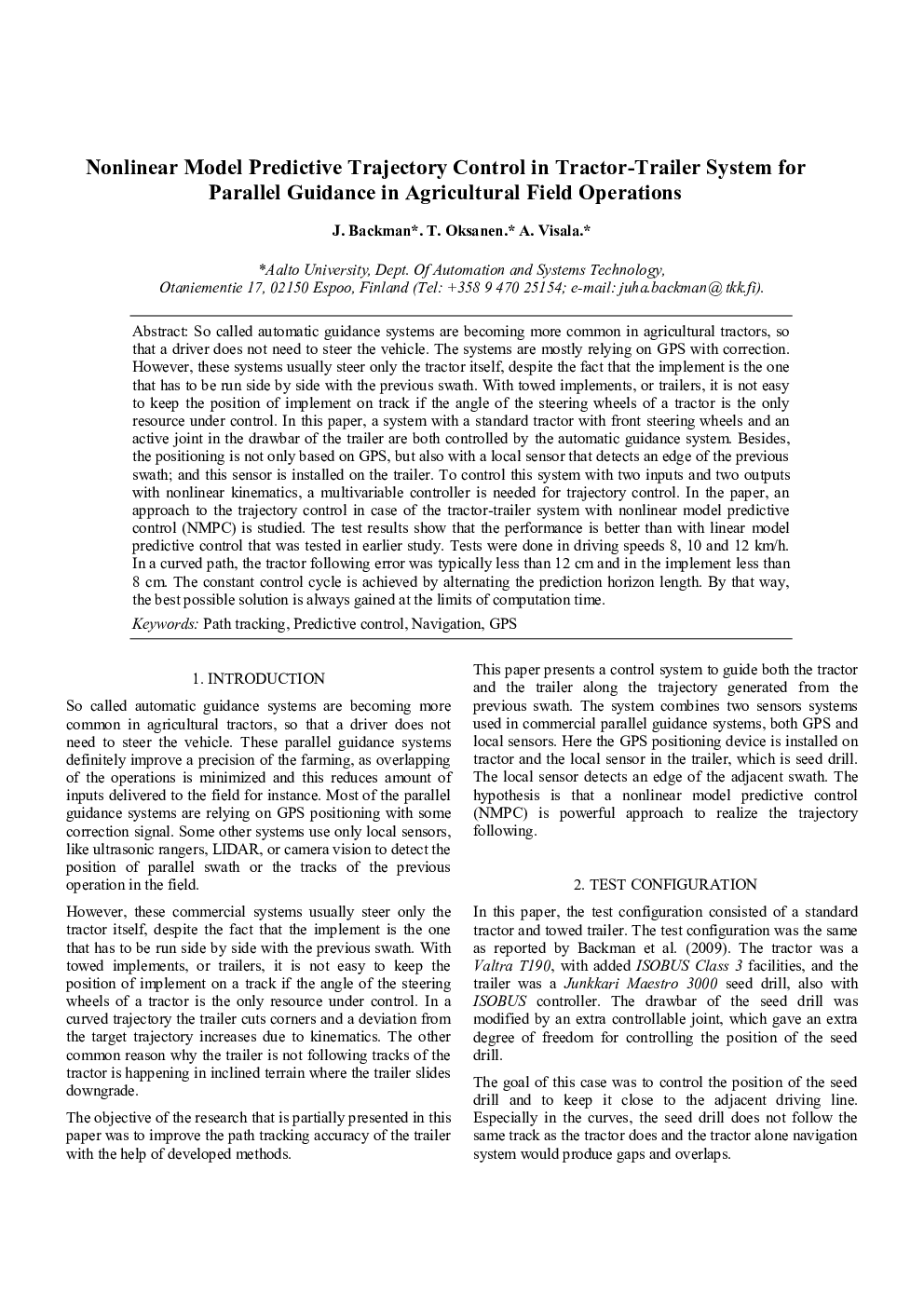| کد مقاله | کد نشریه | سال انتشار | مقاله انگلیسی | نسخه تمام متن |
|---|---|---|---|---|
| 718791 | 892265 | 2010 | 6 صفحه PDF | دانلود رایگان |

So called automatic guidance systems are becoming more common in agricultural tractors, so that a driver does not need to steer the vehicle. The systems are mostly relying on GPS with correction. However, these systems usually steer only the tractor itself, despite the fact that the implement is the one that has to be run side by side with the previous swath. With towed implements, or trailers, it is not easy to keep the position of implement on track if the angle of the steering wheels of a tractor is the only resource under control. In this paper, a system with a standard tractor with front steering wheels and an active joint in the drawbar of the trailer are both controlled by the automatic guidance system. Besides, the positioning is not only based on GPS, but also with a local sensor that detects an edge of the previous swath; and this sensor is installed on the trailer. To control this system with two inputs and two outputs with nonlinear kinematics, a multivariable controller is needed for trajectory control. In the paper, an approach to the trajectory control in case of the tractor-trailer system with nonlinear model predictive control (NMPC) is studied. The test results show that the performance is better than with linear model predictive control that was tested in earlier study. Tests were done in driving speeds 8, 10 and 12 km/h. In a curved path, the tractor following error was typically less than 12 cm and in the implement less than 8 cm. The constant control cycle is achieved by alternating the prediction horizon length. By that way, the best possible solution is always gained at the limits of computation time.
Journal: IFAC Proceedings Volumes - Volume 43, Issue 26, 2010, Pages 133–138